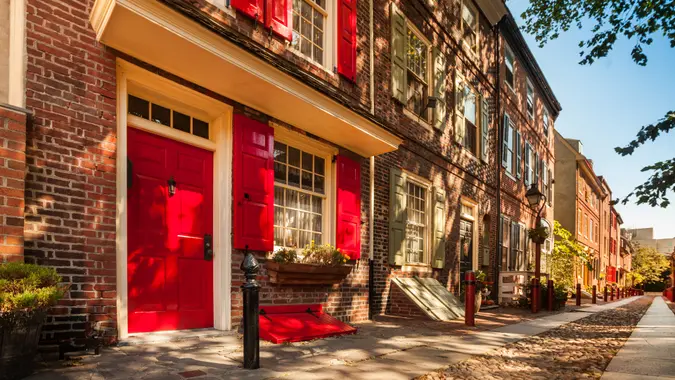4 Costly Mistakes Middle-Class People Made During the Great Depression

Commitment to Our Readers
GOBankingRates' editorial team is committed to bringing you unbiased reviews and information. We use data-driven methodologies to evaluate financial products and services - our reviews and ratings are not influenced by advertisers. You can read more about our editorial guidelines and our products and services review methodology.

20 Years
Helping You Live Richer

Reviewed
by Experts

Trusted by
Millions of Readers
The Great Depression is remembered as the worst recession in modern U.S. history. By the end of 1932, the Great Depression had impacted roughly 60 million people. Some, including middle-class families with good income and a semblance of safety, lost everything.
Though the Great Depression was a catastrophe well beyond anyone’s personal control, people did make what, in hindsight, we can see were mistakes. And these mistakes, however innocent, cost them dearly. Consider the following four mistakes the middle class made during the Great Depression. Are you making the same ones?
Lacking an Emergency Fund
It’s now common knowledge that we all need to have an emergency fund. Financial guru Suze Orman recommends having 12 months’ worth of cash readily available in a high-yield savings account (HYSA) in the event that you lose your income. Too few people had an emergency fund lifeline during the Great Depression, and this was a costly mistake, particularly since most of the social welfare programs we have in place today were not around yet. Middle-class folks blew through their retirement savings to get by.
Committing To Mortgages They Couldn’t Truly Afford
During the Great Depression, interest rates skyrocketed to around 8%-10%. These rates not only discouraged prospective homebuyers (which worsened the recession), they financially crushed homeowners who took on massive mortgages they could no longer keep up with sans emergency fund. As a result, they faced foreclosure, while lenders struggled to recoup their losses. To avoid this mistake, put off buying a home until your emergency fund is guaranteed to cover a year of mortgage payments and be sure to get a fixed mortgage at the best rate possible.
Living With Debt
During the Great Depression, many middle-class families were shouldering consumer debt. They couldn’t keep up with the repayments once the economy tanked and their jobs were lost. Missing debt repayments prompted repossession. Net worths plummeted and wealth-building opportunities vanished.
Having Only One Source of Income
In 1933, the height of the Great Depression, 24.9% of the U.S. workforce was unemployed. Surely, the concept of side hustles existed in some form or fashion, but they weren’t the norm like they are today, nor was the ability to generate passive income. Most middle-class households had one working member who had only one source of income, usually a traditional full-time job. The middle-class families that were not left in financial ruins by the Great Depression often had more than one employed family member (including, possibly, children).
Don’t Let History Repeat Itself
A recession will strike again, and even if it’s not as bad as the Great Depression, it will take a toll on the middle class. We can’t prevent an economic downfall, but we can prevent a personal financial wipeout by taking measures to protect ourselves.
We have an ever-expanding bevy of financial experts dispensing sage and practical advice for free on YouTube and social media. This 500-word article alone has much more information than what the average person had access to ahead of and during the Great Depression. We know how to survive economic turmoil. We just have to put what we know to work.
More From GOBankingRates
 Written by
Written by  Edited by
Edited by 

























